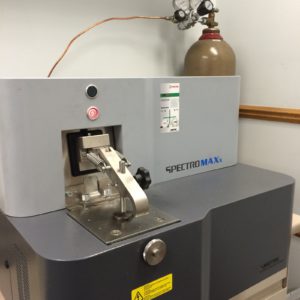The Importance of Material Validation for Prototyping

Craft’s SPECTROMAXx spectrometer. Used for the chemical analysis of ferrous and non-ferrous metal casting alloys.
Verifying the materials you produce meet or exceed customer expectations is paramount to any product development program. Expensive testing will be done and important decisions made off of the data produced, so it is imperative that test results are representative of the materials and products that will be made in production. For this reason, you should expect, and even demand, that alloys and resins used in prototyping processes are representative of your production materials and processes.
Most metal alloys and plastic resin materials are at least partially specified by their chemical composition. (There are some exceptions to this – the cast iron family of materials comes to mind.) Many alloys and resins are also subsequently modified via thermal processing (i.e. heat treat) or other mechanical means (i.e. cold working) in order to develop their final properties.
So long as the material produced and/or used in a process meets the specification chemical and processing requirements, predictable mechanical, thermal, electrical and physical properties will result. A manufacturer of quality prototype parts will recognize this fact and will build robust processes that yield materials in line with customer expectations.
Metal casting, injection molding, thermo forming…the processes can all be prototyped using production grade materials and processes. The trick is knowing what time compression techniques can acceptably be used in order to shorten the product delivery cycle. Usually, this means some sort of “soft tooling” or integrating 3D printing technologies into the process, but not always. The one rule, however, is that time compression should never come at the expense of the materials used to produce the parts.
The post The Importance of Material Validation for Prototyping appeared first on Craft Pattern & Mold Blog.

